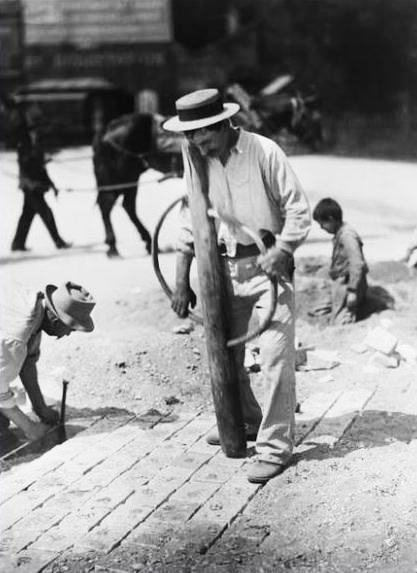What should cobbles be laid onto ?

The bulk of our cobblestones or setts consignments are quite deep, say 20cm or 8 inches. Some consignments are shallower though, so let us know if you have depth constraints. Generally setts have a slight taper to their sides intended to allow them to be knocked down and therefore firmly bedded in. Traditionally they were laid in the most economic and rapid fashion, on a bed of locally available hardcore topped with sand (nowadays "stabilized"), or ash, or whatever would permit the relatively uneven undersides to bed down and be compacted into position. That traditional method is good !
However different countries now have different building regulations and guidelines, and they govern what your builders are able to do to have their professional insurance guarantees validated. For example when vehicles (particularly heavy ones) are going to be driving over them it’s often the case that a reinforced concrete slab has to be cast in order for the insurers to accept that the paving will never subside.
Whilst understandable for thinner new stone paving that ages so badly, it unnecessarily raises the installation costs for heavyweight reclaimed stone paving which lasts forever. Those who wrote up the regulations won’t have taken into consideration traditionally installed reclaimed paving, assuming perhaps that they would no longer be installed.
This is just one example of administrative obstacles to re-using reclaimed materials in an intelligent way, as building regulations tend to reflect the increasingly unacceptable assumption of consumer societies always using new industrial materials imported from who-knows-where in a short-term wasteful un-ecological manner.
